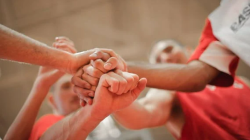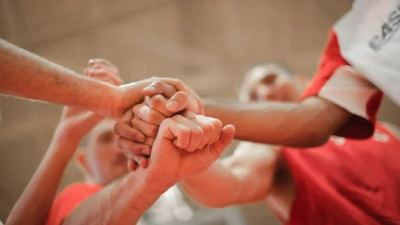Has finally seen its bluray release in Japan, we’re going to give a thorough look at the neat details hidden in the film, the artists who made it all possible and their personal approach, as well as the usual notes about who animated what. There’s an essay on the film coming up as well, but for now this already should be a huge treat for fans of the film!
Original Author, Script, Storyboard Storyboard (絵コンテ, ekonte): The blueprints of animation. A series of usually simple drawings serving as anime’s visual script, drawn on special sheets with fields for the animation cut number, notes for the staff and the matching lines of dialogue. , Editing, Composite, Direction: Makoto Shinkai

Animation Direction Animation Direction (作画監督, sakuga kantoku): The artists supervising the quality and consistency of the animation itself. They might correct cuts that deviate from the designs too much if they see it fit, but their job is mostly to ensure the motion is up to par while not looking too rough. Plenty of specialized Animation Direction roles exist – mecha, effects, creatures, all focused in one particular recurring element. : Ei Inoue, Kenichi Tsuchiya, Shunsuke Hirota, Kazuchika Kise
Is A Kimi No Na Wa (your Name) Sequel Possible?
Key Animation Key Animation (原画, genga): These artists draw the pivotal moments within the animation, basically defining the motion without actually completing the cut. The anime industry is known for allowing these individual artists lots of room to express their own style. : Takeshi Inamura, Hideki Hamasu, Akira Honma, Ei Inoue, Kenichi Tsuchiya, Shunsuke Hirota, Atsuko Tanaka, Megumi Kagawa, Hiroko Minowa, Takayo Nishimura, Taisuke Iwasaki, Michi Kishino, Naoki Kobayashi, Ushio Tazawa, Ai Takashi, Hisaki Furukawa, Satoru Nakamura, Mariko Matsuo, Asahi Takeuchi, Emi Matsunaga, Naoyuki Tatsuwa, Ryosuke Mizuno, Naoko Kawahara, Ryosuke Tsuchiya, Yuko Matsumura, Minoru Ohashi, Yutaka Araki, Yuji Watanabe, Naoko Saito, Sanae Yamamoto, Kazuyoshi Takeuchi
Opening Key Animation Key Animation (原画, genga): These artists draw the pivotal moments within the animation, basically defining the motion without actually completing the cut. The anime industry is known for allowing these individual artists lots of room to express their own style. : Atsushi Nishigori, Junichiro Taniguchi, Taisuke Iwasaki, Shouko Takimoto, Koji Ooya, Masayoshi Tanaka
Flashback Scene Direction, Key Animation Key Animation (原画, genga): These artists draw the pivotal moments within the animation, basically defining the motion without actually completing the cut. The anime industry is known for allowing these individual artists lots of room to express their own style. , Composite: Yoshitoshi Shinomiya
Kimi No Na Wa: “tears…why?”
— Some quick staff notes: while most one-man army type creators in this industry are animators, Shinkai keeps that approach from his indie days despite focusing on anything but that aspect. The animation crew captained by the talented Masashi Ando represents the post-Ghibli climate more strongly than perhaps any other project to date. Production I.G, prominently credited for production assistance, was also an important factor; the second separate group of key animators is made up of people with ties to the company, and of course there’s Kazuchika Kise as one of the animation directors as well.
‘s complete production schedule, from the pitch to its launch. As you can see, Shinkai wasn’t kidding when he said he was still working on the film 3 days before its Anime Expo world premiere.

— Takashi Hashimoto animation right off the bat, with the comet Tiamat blazing through the clouds. I’ll attempt to highlight all the notable pieces of animation with confirmed authorship, but might make a bit of an exception with Hashimoto because, as I found out after I bought his key animation Key Animation (原画, genga): These artists draw the pivotal moments within the animation, basically defining the motion without actually completing the cut. The anime industry is known for allowing these individual artists lots of room to express their own style. book for the film, he handled right about every piece of effects animation. He’s the indisputable king of 2D FX FX: Shorthand for effects animation – water, fire, beams, that kind of cut. A pillar of Japanese 2D animation. in anime through quantity alone, since he acts the supervisor of that material in most series that have a specific role for it. In that sense, it’s not surprising to see him dominate this movie as well. And of course, this means that Shinkai’s healthy obsession with celestial objects was entrusted to a reliable animator.
Kimi No Na Wa.
— This is going to be a very positive set of notes because I quite like the film and think it’s brilliantly constructed, but I have to admit that I think the opening sequence is a very weak effort, in that it feels like a standard latenight-style opening weirdly disconnected from the film’s flow. If you do like it though, here’s the video storyboards for the entire sequence! The movie’s famous character designer Masayoshi Tanaka was too busy to supervise the film, but he made up for it by acting as animation director for its opening. He also personally animated some bits, like this around the intro and this beautiful shot that has shading totally unlike the rest of the film.
This time Shinkai storyboarded the movie using Toon Boom’s Storyboard Storyboard (絵コンテ, ekonte): The blueprints of animation. A series of usually simple drawings serving as anime’s visual script, drawn on special sheets with fields for the animation cut number, notes for the staff and the matching lines of dialogue. pro, outputting video boards with some real footage interspliced. That part is actually not new for him.

— The way in which Mitsuha does her hair, which had its own set of reference sheets drawn by Masashi Ando, is quickly established as a pretty intricate process. This is one of the many mechanisms to highlight the contrast between how they operate the bodies, since Taki opts for an easy ponytail.
Director Makoto Shinkai’s Latest Work “suzume No Tojiri” Blu Ray & Dvd Will Be Released On
— There are a couple of scenes in this movie using this pattern of visible thought bubble that pans down to a flustered Mitsuha. This is a cute quirk that isn’t in vogue anymore, which might be explained by the fact that Shinkai is a bit older than most fans realize, and thus sometimes draws inspiration from more old-school work. Since his movies resonate so strongly with the youth and have great grasp of communication between current teens, people tend to forget he’s 44 already!
— The dancing scene is one of the most impressive craft accomplishments in the film, and packs more meaning than you might have noticed. The sequence was choreographed and performed by kabuki actor Kazutaro Nakamura, and it’s meant to represent the first comet incident that is later revealed to have caused the lake’s existence. This clearly reinforces the role of the Miyamizu and their shrine as an entity to preserve knowledge. On an animation level it’s quite the achievement too; rotoscoping sequences like this often causes some disconnect between the obvious cartoon expressions and the real body, so they opted for heavily referencing instead. The result, animated by the ex-Ghibli youngster Naoko Kawahara whom Masashi Ando praised, is truly enchanting. The fires that complement it are once again Takashi Hashimoto’s work.

— This isn’t as obvious until we see both of them act within their bodies, but with Mitsuha as Taki comes even more delightful body language and acting nuance. Mannerisms like playing with one’s hair quickly stand out. Logically I understand that it would screw over the pacing, but I wouldn’t mind 10 times more body swapping hijinks just to see each other acting in (literally) each other’s shoes. Also, there’s another cute detail in how Mitsuha doesn’t wear the ribbon as a bracelet when she’s in Taki’s body because she doesn’t even know he’s got it, whereas Taki won’t wear it because he refuses to tie Mitsuha’s hair. So in a way, its presence marks that the actual person is in control of the body.
Why Is The Scenes In Kimi No Na Wa (your Name) So Beautiful?
— This is a good moment to bring up Mitsuha’s obsession with a pink hedgehog, since that’s what she sews into Okudera’s skirt. The hedgehog had already appeared before and keeps on showing up constantly throughout the film on notebooks, pencil cases, straps, plushies, and all sorts of merch – even 25 years old Mitsuha still has some! As far as I’m concerned, Mitsuha writing Amy the Hedgehog fanfiction will be canon until proved otherwise. Incidentally, her sister Yotsuha is a big fan of some sort of pink and blue creature.
— Mitsuha constantly checking out how to get to wherever she needs to go is a neat touch as well. The movie is mindful of modern details like that, like how she’s connected through 4G on the train and using wi-fi at home. That is what I was going to point out, but jeez girl how did you deplete the phone’s battery in about 20 seconds. The boring answer is that these continuity errors are bound to happen with teams this big. I wouldn’t even have caught it if I wasn’t seeking examples of these details to begin with.

— Hard to appreciate without high-resolution video, but you can feel the slight pressure of the pen and the hand’s softness when Mitsuha is writing on Taki’s hand.





